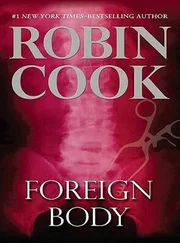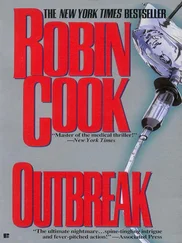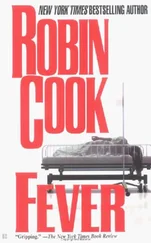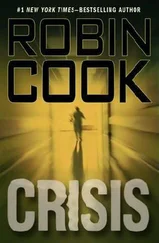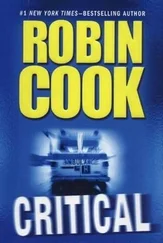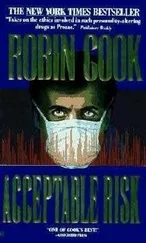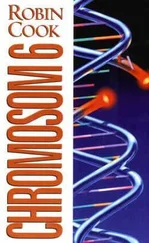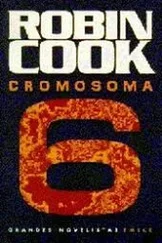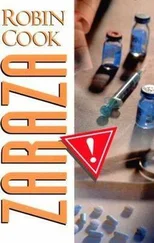Robin Cook - Coma
Здесь есть возможность читать онлайн «Robin Cook - Coma» весь текст электронной книги совершенно бесплатно (целиком полную версию без сокращений). В некоторых случаях можно слушать аудио, скачать через торрент в формате fb2 и присутствует краткое содержание. Город: New York, Год выпуска: 2002, ISBN: 2002, Издательство: Signet Books, Жанр: thriller_medical, на английском языке. Описание произведения, (предисловие) а так же отзывы посетителей доступны на портале библиотеки ЛибКат.
- Название:Coma
- Автор:
- Издательство:Signet Books
- Жанр:
- Год:2002
- Город:New York
- ISBN:9780451207395
- Рейтинг книги:4 / 5. Голосов: 1
-
Избранное:Добавить в избранное
- Отзывы:
-
Ваша оценка:
- 80
- 1
- 2
- 3
- 4
- 5
Coma: краткое содержание, описание и аннотация
Предлагаем к чтению аннотацию, описание, краткое содержание или предисловие (зависит от того, что написал сам автор книги «Coma»). Если вы не нашли необходимую информацию о книге — напишите в комментариях, мы постараемся отыскать её.
Coma — читать онлайн бесплатно полную книгу (весь текст) целиком
Ниже представлен текст книги, разбитый по страницам. Система сохранения места последней прочитанной страницы, позволяет с удобством читать онлайн бесплатно книгу «Coma», без необходимости каждый раз заново искать на чём Вы остановились. Поставьте закладку, и сможете в любой момент перейти на страницу, на которой закончили чтение.
Интервал:
Закладка:
“I could have done without that,” said Susan, smiling.
“Well, at least it emphasizes the point about the economy. That’s the central concept of the institute. Now, if you’ll follow me, I’ll show you the principal features of the hospital.”
Michelle stood up and walked toward the mirrored wall from which she had appeared. A door glided open. It shut behind them as they entered another corridor about fifty feet long. The far end of the corridor was also mirrored from floor to ceiling. As Susan passed down the hallway she noted other doors but they were all closed. None of the doors had any exposed hardware. Apparently they were automatically activated.
When they reached the far end of the corridor, a door slid open and Susan entered a familiar-looking room. It was about forty by twenty feet and looked exactly like an intensive care unit in any hospital. There were five beds and the usual assortment of gadgets, EKG screens, gas lines, etcetera. But four of the beds appeared different: each was constructed with a gap of some two feet running lengthwise. It was as if each bed were constructed of two very narrow beds with a fixed two-foot span between them. In the ceiling above the beds there were complicated tracklike mechanisms. The fifth bed, which seemed conventional, was occupied. A patient was being breathed by a small respirator. Susan was reminded of Nancy Greenly.
“This is the visiting area for the immediate families,” explained Michelle. “When a family is scheduled to visit, the patient is transferred here automatically. When he is placed in one of these special beds and it is made up, the bed appears like a normal one. This patient was visited this afternoon.” Michelle pointed toward the patient in the fifth bed. “We purposely did not return him to the main ward for your benefit.”
Susan was confused. “You mean that bed the patient is in is the same as these other beds?”
“Exactly. And when family visits, these other beds are filled with other patients so that the area looks like a normal intensive care unit Follow me, please.”
Michelle walked the length of the room, past the patient in the bed. At the end of the room was a door, which opened silently and automatically.
Susan was amazed when she passed the fifth bed with the patient. The bed appeared exactly like a regular hospital bed. There was no evidence that its central section, its basic support, was missing. But Susan had no time to examine the bed more closely as she followed Michelle into the next room.
The first thing Susan became aware of was the light; there was something strange about it. Then she felt the warmth and the humidity. Finally she saw the patients, and she stopped in utter astonishment. There were more than a hundred patients in the room, and all of them were completely suspended in midair about four feet from the floor. All of them were naked. Looking closely, Susan could see the wires piercing multiple points on the patients’ long bones. The wires were connected to complicated metal frames and pulled taut. The patients’ heads were supported by other wires from the ceiling which were attached to screw eyes in the patients’ skulls. Susan had an impression of grotesque, horizontal, sleeping marionettes.
“As you can see, the patients are all suspended by wires under tension. Some visitors react strongly to this, but it has proven to be the best method of long-term care, totally preserving the skin and minimizing nursing care. Its origin was in orthopedics, where wires are passed through bones to provide traction. Burn treatment research showed the benefits to be obtained when the skin does not rest on any kind of surface. It was a natural progression to apply the concept to the care of the comatose patient.”
“It is rather gruesome.” Susan recalled the upsetting image of the cadavers hung in the freezer. “What is the strange lighting?”
“Oh, yes, we should put on glasses if we stay in here much longer.” Michelle fetched several pairs of goggles from a. table.
“There is a low-level of ultraviolet light in here. It has been found useful in controlling bacteria as well as helping to maintain the integrity of the skin.” Michelle offered a set of goggles to Susan, and they both put them on.
“The temperature in here is maintained at ninety-four point five Fahrenheit, plus or minus five hundredths of a degree. The humidity is held at eight-two percent with a one percent variance. That tends to reduce patient heat loss and hence reduces the patients’ caloric needs. The humidity has reduced the respiratory infection problem, which you know is critical for coma patients.”
Susan was spellbound. She gingerly moved closer to one of the suspended patients. A profusion of wires perforated various long bones. The wires then passed horizontally through an aluminum frame around the patient before running up to a complicated trolley device on the ceiling. Susan looked up at the ceiling and saw that it was a maze of tracks for the trolleys. All the I.V. lines, suction tubes, and monitoring lines from the patient ascended to the trolley. Susan looked back at Michelle. “And there are no nurses?”
“I happen to be a nurse, and there are two others on duty, plus one doctor. That’s quite a reasonable ratio for one hundred and thirty-one intensive care patients, wouldn’t you say? You see, everything is automated. The patient’s weight, blood gases, fluid balance, blood pressure, body temperature—in fact, an enormous list of variables—are being constantly scanned and compared to standards by the computer. The computer actuates solenoid valves to rectify any abnormalities or discrepancies it finds. It is far better than conventional care. A doctor tends to concern himself with isolated variables and in a static fashion. The computer is able to sample over time, hence it treats dynamically. But more important still is that the computer correlates all the variables at any given moment. It’s much more like the bodies’ own regulatory mechanisms.”
“Modern medicine carried to the nth degree. It’s incredible, really it is. It’s like some science fiction setting. A machine taking care of a host of mindless people. It’s almost as if these patients aren’t people.”
“They aren’t people.”
“I beg your pardon?” Susan looked up from the patient toward Michelle.
“They were people; now they’re brain stem preparations. Modern medicine and medical-technology have advanced to the point where these organisms can be kept alive, sometimes indefinitely. The result was a cost-effectiveness crisis. The law decided they had to be maintained. Technology had to advance to deal with the problem realistically. And it has. This hospital has the potential to handle up to a thousand such cases at a time.”
There was something about the basic philosophy Michelle elucidated that made Susan uncomfortable. She also had a feeling that her guide had herself been very carefully indoctrinated. Susan could tell that Michelle did not question what she was saying. Nevertheless Susan did not dwell on the institute’s philosophical foundations. She was overwhelmed by the place’s physical aspects. She wanted to see more. She looked around the room. It was more than a hundred feet long, with a fifteen-to twenty-foot ceiling. In the ceiling the maze of tracks was bewildering.
There was another door at the far end of the room. It was closed. But it was a normal door with normal hardware. Susan decided that only the doors they had so far traversed were centrally controlled. After all, most visitors, the families, never came into the main ward.
“How many operating rooms are there here in the Jefferson Institute?” asked Susan suddenly.
“We don’t have operating rooms here. This is a chronic care facility. If a patient needs acute care, he is transferred back to the referring institution.”
Читать дальшеИнтервал:
Закладка:
Похожие книги на «Coma»
Представляем Вашему вниманию похожие книги на «Coma» списком для выбора. Мы отобрали схожую по названию и смыслу литературу в надежде предоставить читателям больше вариантов отыскать новые, интересные, ещё непрочитанные произведения.
Обсуждение, отзывы о книге «Coma» и просто собственные мнения читателей. Оставьте ваши комментарии, напишите, что Вы думаете о произведении, его смысле или главных героях. Укажите что конкретно понравилось, а что нет, и почему Вы так считаете.

